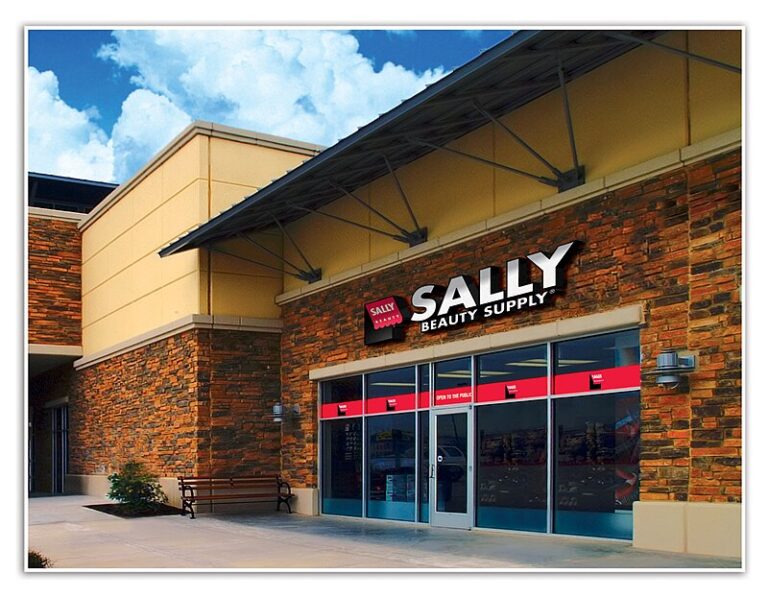Sally Beauty Supply began in New Orleans in 1964 but found its long-term headquarters in Denton, Texas after acquiring a Denton-based beauty-supply business in 1982. Under Alberto-Culver’s ownership, the company expanded rapidly, opening a new store about every three days by the mid-1990s. Following its 2006 spin-off into a stand-alone public company, Sally accelerated from a primarily professional distributor to a dual-channel beauty leader with more than 4,500 locations worldwide. The full story reveals how strategic acquisitions built this beauty industry giant.
Image: SallyBeauty, SBCStore, CC BY-SA 3.0
New Orleans Roots: Sally Beauty’s Founding and Early Days
The humble beginnings of Sally Beauty Supply trace back to 1964, when C. Ray Farber opened his first store on Magazine Street in New Orleans, Louisiana. Named after his daughter Sally, this standalone shop initially served licensed beauticians with professional hair-care products and equipment.
Within five years, Farber had expanded to a dozen locations around New Orleans. The business built a reputation as a trusted supplier among beauty professionals and caught the attention of Alberto-Culver, which acquired Sally in 1969 for about $1 million.
This modest Louisiana operation laid the groundwork for what would later become a global beauty-supply enterprise—proof that a single-store start can scale with the right partner and vision.
The Transformation Under Alberto-Culver’s Ownership
After the 1969 acquisition, Alberto-Culver transformed Sally from a small New Orleans chain into a beauty-supply powerhouse over nearly four decades of ownership. Their manufacturing expertise in brands such as Alberto VO5 and TRESemmé complemented Sally’s retail and distribution capabilities, creating a powerful supplier-to-storefront pipeline.
Alberto-Culver introduced operational disciplines that boosted traffic and margins while funding aggressive new-store growth. By the mid-1990s, Sally was opening a store roughly every three days, and international expansion became a priority.
By 1997, Sally’s sales reached ~$880 million—nearly half of Alberto-Culver’s revenue—setting the stage for the 2006 separation, when Clayton, Dubilier & Rice took a ~47.5% stake as Sally became a publicly traded company.
Denton Connection: How a North Texas Acquisition Shaped Sally’s Destiny
While Alberto-Culver was scaling Sally nationally, a pivotal move reshaped its Texas identity. In 1982, Sally acquired a Denton-based beauty-supply operation (from the former Gibson’s business) and relocated its headquarters to Denton, leveraging the region’s distribution footprint and talent. That integration accelerated Sally’s South and Southwest growth and reinforced a merchandising approach focused on broad assortments at value price points—a philosophy that would become central to Sally’s success.
The Denton relocation provided a permanent Texas base that still anchors the company’s corporate and logistics operations today.
Strategic Acquisitions That Built a Beauty Empire
Following the HQ move, Sally embarked on an acquisition streak that turned a regional player into a continental network. Throughout the 1980s, the company absorbed multiple multi-store chains across the South and Midwest, adding well over 100 locations. In 1984, Sally purchased an ~80-plus-store operator to consolidate share in key metro markets, and continued to bolt on distributors and retailers that deepened professional relationships while expanding consumer reach.
This buy-and-build playbook became Sally’s hallmark—expanding product breadth, vendor leverage, and market density.
Expanding Horizons: Sally Beauty’s Journey to International Markets
Sally’s ambition reached overseas in the 1990s, beginning with United Kingdom entries via acquisition, then scaling to 100+ UK locations by 1997 under the Sally Beauty / Salon Services banners. The company added Puerto Rico in 1993, and entered Mexico by the turn of the century through distributor/retail acquisitions aligned with what later became the Beauty Systems Group (BSG). Subsequent expansion brought operations across the UK & Ireland, Spain, France, and select Latin American markets.
By the early 2020s, Sally operated thousands of stores across North America and Europe, reflecting a durable international strategy built on local operators and professional partnerships.
Leadership Evolution and Corporate Milestones
Sally’s leadership arc began with founder C. Ray Farber (1964). Professional managers, notably Michael Renzulli (appointed in the 1970s), drove national scaling; later, Gary Winterhalter and Christian Brickman guided the company through the spin-off and modernization phases. In 2021, Denise Paulonis became CEO, emphasizing digital capability, inventory productivity, and a sharpened customer focus.
The 2006 spin-off from Alberto-Culver created Sally Beauty Holdings, with two operating segments: Sally Beauty Supply (consumer-facing retail) and Beauty Systems Group (CosmoProf and others) serving licensed professionals. From its Denton base, the company now spans more than 4,500 locations worldwide.
From Professional Focus to Mass-Market Appeal
View this post on Instagram
Industry evolution nudged Sally from a purely pro-focused supplier to a dual-audience retailer: licensed professionals via BSG and everyday consumers via Sally Beauty Supply. The omnichannel build-out—accelerated in 2020—linked e-commerce, apps, and stores, putting salon-quality solutions in more customers’ hands while preserving pro-only assortments for licensed buyers.
Acquisitions (including Salon Services in the UK in 2007) and selective entries in Europe and Latin America solidified Sally as both a professional distributor and a mass-market beauty destination.
Sally Beauty’s Impact on the Global Beauty Supply Industry
As the beauty-supply landscape globalized, Sally emerged as a key standard-setter in accessibility and selection. With ~4,400–4,600 locations worldwide and ~$3.7B in annual revenue, Sally competes alongside large specialty retailers by blending professional distribution with consumer retail.
Even amid modest top-line growth, Sally has improved operating margins by pruning underperforming stores, modernizing supply chains, and tailoring assortments to local demand. You’ll see that strength across hair care, color, tools, nails, and skincare, with expanded personalization offerings that track consumer demand for tailored solutions.


